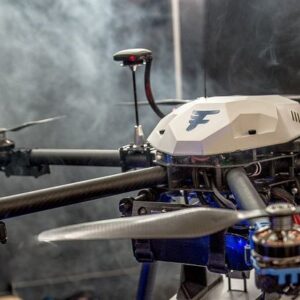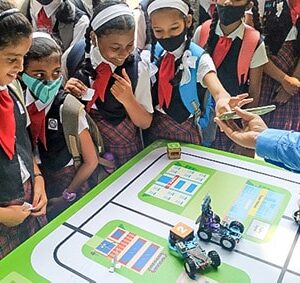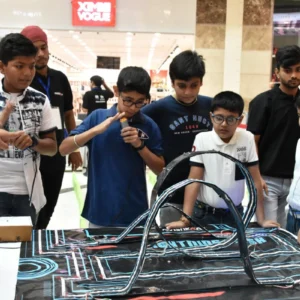The Atal Tinkering Lab System (ATLS) is an initiative by the Atal Innovation Mission (AIM) under the NITI Aayog, Government of India. It aims to foster creativity, critical thinking, problem-solving, and innovation among students, particularly in schools. The system is designed to provide students with the tools, resources, and mentorship needed to experiment, design, and create innovative solutions through hands-on learning and tinkering.
Key Features of the Atal Tinkering Lab System:
- Innovation and Experimentation Focus:
- ATLS is centered around allowing students to experiment, innovate, and create models, prototypes, and solutions. The labs are designed as spaces where students can explore new ideas and learn by doing.
- Hands-on Learning:
- The labs encourage students to work with a wide range of tools and technologies such as robotics, 3D printing, electronics, sensors, and coding. This fosters practical learning and application of theoretical knowledge in real-world scenarios.
- State-of-the-Art Infrastructure:
- The labs are equipped with modern tools and equipment, such as:
- 3D printers
- Arduino and Raspberry Pi kits
- Robotics kits
- Drones and sensors
- Basic electronics and hardware for circuit-building
- Software tools for coding and programming (e.g., Scratch, Python)
- The labs are equipped with modern tools and equipment, such as:
- Mentorship and Guidance:
- Schools and students receive access to mentors, trainers, and subject experts who provide guidance and support to students throughout their innovation journey. This helps them refine their ideas and enhances their problem-solving skills.
- Collaborative Space:
- ATLS promotes collaboration among students from different backgrounds and disciplines, encouraging them to work together, exchange ideas, and co-create solutions. This creates a learning environment where teamwork and communication skills are emphasized.
- Learning Methodologies:
- The system emphasizes design thinking, problem-solving, and experiential learning. Students are encouraged to identify real-world problems, ideate solutions, build prototypes, and test their designs.
- Curriculum Integration:
- ATLS is aligned with the school curriculum, offering students a way to apply theoretical knowledge in science, technology, engineering, and mathematics (STEM). It also integrates with other subjects, encouraging interdisciplinary learning.
- Competitions and Challenges:
- Regular innovation challenges, competitions, and events are organized to engage students in problem-solving tasks and inspire them to develop practical solutions to global and local challenges.
- Skill Development:
- The lab encourages students to develop a range of important skills, including:
- Critical thinking
- Creativity
- Technical skills (robotics, coding, electronics)
- Communication and collaboration
- Problem-solving and innovation skills
- The lab encourages students to develop a range of important skills, including:
- Global Exposure:
- Students and schools in the Atal Tinkering Lab system may have opportunities to connect with a global network of innovators, participate in international events, and gain exposure to cutting-edge technologies.
Benefits:
- Empowering Students: The ATLS provides students with the resources and space to explore their creativity and transform their ideas into reality, helping them become future innovators, problem-solvers, and leaders.
- Promotion of STEM Education: It encourages students to pursue and excel in STEM-related fields by providing them with practical tools and learning experiences that reinforce classroom concepts.
- Nurturing Innovation: Students are encouraged to develop a mindset focused on solving real-world problems, which fosters innovation and entrepreneurship from a young age.
- Building a Future-Ready Workforce: By developing technical skills, creativity, and critical thinking, ATLS plays a crucial role in building a future-ready workforce capable of thriving in a rapidly changing technological world.
- Bridging the Gap: The system helps bridge the gap between theoretical learning and practical application, giving students an opportunity to experiment with emerging technologies and concepts.
Ideal Participants:
- Students (Grades 6–12): The system is aimed primarily at school students, especially in rural and underserved areas, enabling them to gain exposure to modern technologies and develop an innovation-driven mindset.
- Schools: Schools that are selected to set up an Atal Tinkering Lab benefit from the infrastructure, resources, and mentorship provided by the program.
- Teachers: Teachers can also benefit from training and workshops on integrating innovation and hands-on learning into the curriculum.
Conclusion:
The Atal Tinkering Lab System is a revolutionary initiative that empowers students to become innovators and creators, developing practical skills in science, technology, engineering, and mathematics. By providing them with the resources and mentorship needed to experiment, create, and problem-solve, the ATLS helps lay the foundation for a future generation of skilled professionals, entrepreneurs, and leaders who will drive progress and innovation.






Reviews
There are no reviews yet.